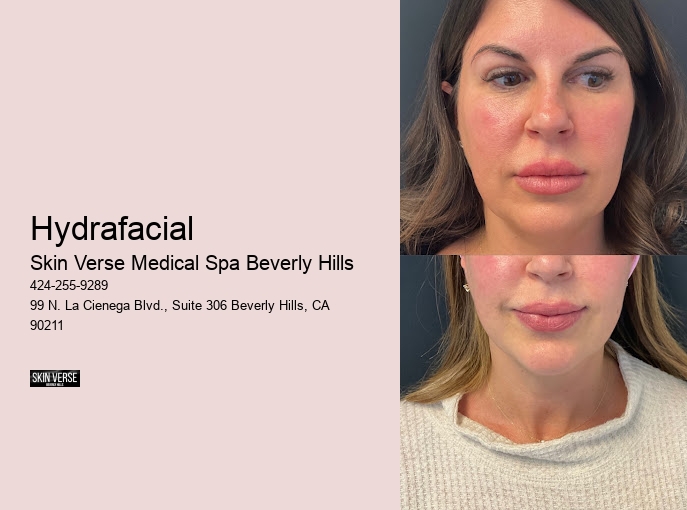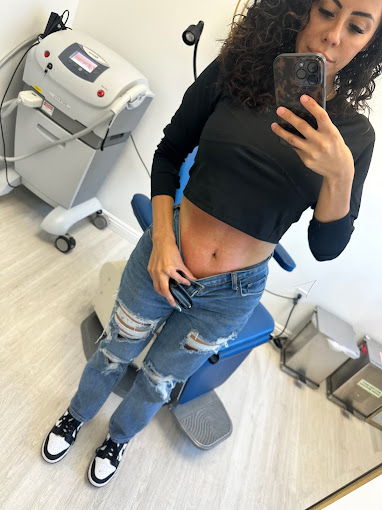

Skin Verse Medical Spa in Beverly Hills, California, is a premier destination for advanced beauty and wellness treatments. We specialize in offering state-of-the-art services to help you achieve your aesthetic goals and enhance your natural beauty in a luxurious and welcoming environment.
Services Offered at Skin Verse Medical Spa:
Botox and Dysport Treatments - Smooth fine lines and wrinkles for a youthful, refreshed appearance.
Lip Fillers - Enhance the shape and volume of your lips for a fuller, balanced look.
PDO Threads - A non-surgical facelift alternative that lifts and tightens sagging skin.
Laser Hair Removal - Achieve long-lasting smooth skin with advanced laser technology.
Morpheus8 - A revolutionary skin rejuvenation treatment that combines microneedling and radiofrequency to tighten and firm the skin.
Forma - Improves skin elasticity and tone through advanced thermal skin rejuvenation.
Skin Care and Facials - Personalized treatments to nourish, hydrate, and revitalize your skin.
Chemical Peels - Improve skin texture, reduce hyperpigmentation, and promote a radiant glow.
Why Choose Skin Verse Medical Spa?
Located in the heart of Beverly Hills, Skin Verse Medical Spa offers a comprehensive suite of treatments tailored to meet the unique needs of each client. Whether you're looking for injectables to refine your features, cutting-edge skincare therapies, or non-invasive rejuvenation treatments, our highly skilled professionals provide exceptional care and precision.
At Skin Verse Medical Spa, your comfort and satisfaction are our top priorities. With a commitment to excellence and personalized service, we create results that enhance your natural beauty while maintaining a discrete and professional atmosphere.
Visit us today and experience why Skin Verse Medical Spa is Beverly Hills' trusted destination for transformative beauty and wellness solutions. Call now or book your appointment online!
99 N. La Cienega Blvd., Suite 306 Beverly Hills, CA 90211
4242-559-289
Understanding Preventative Botox Preventative Botox is increasingly becoming popular among younger individuals who wish to delay the appearance of fine lines and wrinkles. Unlike traditional Botox, which primarily targets existing wrinkles, preventative Botox focuses on inhibiting the development of these age markers before they become clearly visible. This proactive approach to skincare and rejuvenation may be appealing for those keen on maintaining a youthful complexion for as long as possible.
The Right Age to Begin Determining the right time to start preventative Botox can be somewhat subjective and varies from person to person. Generally, it's not about reaching a certain age but rather observing the behavior of your skin. Some people begin in their mid-20s or early 30s when they notice expression lines remaining even when their face is at rest. However, genetics, lifestyle choices, and skin type play significant roles in this decision-making process.
Consultation with a Professional Before embarking on any cosmetic treatment like Botox, consultation with a qualified dermatologist or plastic surgeon is essential. A professional can assess your skin’s current condition and discuss potential benefits and risks associated with starting treatments at your age. They can also provide personalized advice based on your individual goals and concerns.
Frequency and Dosage Considerations For those opting for preventative Botox, treatments are typically less frequent and involve lower dosages than those used in more mature clients addressing deeper wrinkles. The aim here is subtlety – preventing dynamic wrinkles from setting in without altering facial expressions drastically. Starting with minimal doses allows you to gauge how your body responds while maintaining a natural look.
Lifestyle Factors That Influence Timing Aside from biological aging, external factors such as sun exposure, smoking, diet, and stress levels significantly affect skin health. Minimizing harmful habits while incorporating protective measures like using sunscreen daily can complement the effects of preventative Botox by preserving skin elasticity and overall health.
Long-Term Rejuvenation Strategy Preventative Botox should be considered part of a broader long-term skincare strategy that includes regular use of high-quality skincare products, hydration, healthy nutrition, and possibly other non-invasive treatments that support skin health over time. By approaching rejuvenation holistically, you're more likely to enjoy sustained results that reflect both inner wellness and outward vitality.
| Entity | Definition |
|---|---|
| Hydrafacial | A non-invasive facial treatment that combines cleansing, exfoliation, extraction, and hydration. |
| CO2 Laser | A laser treatment that targets skin issues like deep wrinkles, acne scars, and skin tightening. |
| Chemical Peel | A treatment that applies a chemical solution to exfoliate the skin and improve its texture and appearance. |
| BBL Laser | Broadband Light (BBL) treatment that rejuvenates the skin and reduces pigmentation, redness, and acne. |
| Microneedling | A procedure that uses fine needles to create micro-injuries to stimulate collagen production and improve skin texture. |
Laser hair removal is a popular cosmetic procedure that uses focused light to target and destroy hair follicles, which can result in the reduction of hair growth over time. It's an alternative to traditional methods like waxing, shaving, and plucking. The technology behind laser hair removal has evolved significantly, providing individuals with a more permanent solution for unwanted hair.
The number of sessions required for laser hair removal varies depending on several factors. These include the individual’s skin type, hair color, hair thickness, and the area being treated. For example, dark coarse hair on light skin typically responds well to treatment and may require fewer sessions compared to lighter or finer hair. Hormonal factors and genetics also play a significant role in determining the effectiveness of laser treatments.
On average, most people need between six to eight sessions to achieve significant reduction in hair growth. This range is not fixed as some individuals may see satisfactory results sooner while others might need additional treatments. Each session is spaced out approximately four to six weeks apart to allow for the different phases of hair growth to be targeted effectively.
While many refer to laser hair removal as offering "permanent" results, it's more accurate to describe it as permanent reduction. No laser system can guarantee 100% permanent removal of all unwanted hairs forever. Some hairs may eventually regrow due to hormonal changes or other biological factors but they typically return finer and lighter in color.
Following the initial set of treatments, maintenance sessions may be necessary to keep the area free of unwanted hair long-term. These follow-up appointments are usually less frequent than the original treatment schedule—possibly once a year or even less often—and help manage any new growth that occurs over time.
Consulting with a qualified practitioner who specializes in laser treatments is crucial for customizing your treatment plan for optimal results. They will consider all personal variables during your consultation and monitor progress throughout your sessions. This personalized approach ensures safety while striving towards achieving the desired outcome with regards to your rejuv goals.

No, microdermabrasion is a non-invasive procedure that does not require sedation or anesthesia, making it a quick and comfortable skin rejuvenation treatment.
Botox is commonly used to reduce wrinkles, fine lines, and crow's feet, and it can also treat conditions like excessive sweating, migraines, and muscle spasms.
Botox Cosmetic is a non-surgical treatment designed to reduce the appearance of facial wrinkles and fine lines by relaxing the underlying muscles.
No, IPL is different from lasers as it uses a broad spectrum of light, while lasers use a single wavelength. IPL is versatile but may not be as precise as laser treatments.
Side effects of microdermabrasion are minimal and may include temporary redness, slight swelling, and mild sensitivity, which usually subside within a few hours to a day.